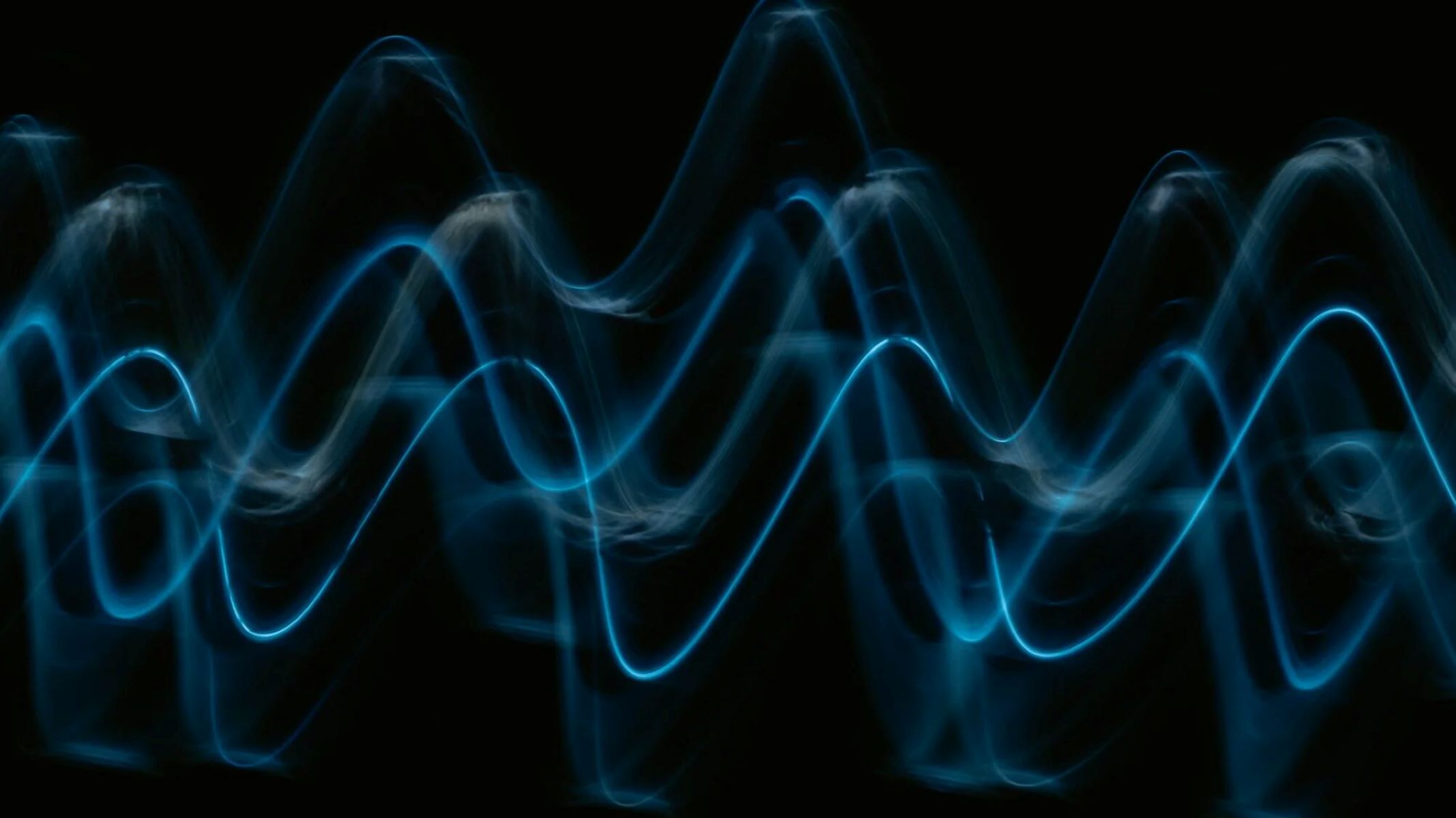Home>Language and Grammar>The Surprising Difference Between Ellipses And Ovals


Language and Grammar
The Surprising Difference Between Ellipses And Ovals
Published: January 24, 2024
Discover the distinction between ellipses and ovals, and how they are used in language and grammar. Learn the surprising differences between these two terms.
(Many of the links in this article redirect to a specific reviewed product. Your purchase of these products through affiliate links helps to generate commission for Regretless.com, at no extra cost. Learn more)
Table of Contents
Introduction
Ellipses and ovals are two shapes that often cause confusion due to their similar appearance. While they may seem interchangeable in everyday language, they possess distinct characteristics that set them apart in the realms of mathematics, geometry, and real-world applications. Understanding the nuanced differences between ellipses and ovals is not only intriguing but also essential for various fields such as mathematics, engineering, and design.
In this article, we will delve into the definitions, mathematical properties, geometric disparities, and real-world applications of ellipses and ovals. By exploring these aspects, we aim to shed light on their unique attributes and showcase how they manifest in diverse contexts. Whether you have a penchant for mathematics, a curiosity about shapes, or a desire to comprehend their practical implications, this exploration of ellipses and ovals will provide valuable insights that extend beyond mere geometric distinctions.
Definition of Ellipses and Ovals
An ellipse is a closed curve that resembles a squashed circle, characterized by two distinct foci and a sum of distances from the foci to any point on the curve remaining constant. This unique property distinguishes ellipses from other shapes, as it results in a symmetrical, elongated form that is often encountered in various scientific and practical contexts. Mathematically, an ellipse can be defined as the set of all points where the sum of the distances from two fixed points (the foci) is constant. This fundamental definition underpins the geometric and algebraic properties of ellipses, making them a focal point in fields such as astronomy, engineering, and architecture.
On the other hand, an oval is a broader term used to describe any elongated, closed curve that does not fit the criteria of a specific geometric shape, such as a circle or an ellipse. Ovals can exhibit diverse forms and proportions, encompassing a wide range of shapes that deviate from circular or elliptical patterns. Unlike the precise definition of an ellipse, ovals lack a strict mathematical formula and are often characterized by their asymmetry and irregularity. This inherent variability grants ovals a sense of versatility, allowing them to manifest in art, design, and natural phenomena with captivating diversity.
In essence, while ellipses adhere to a specific mathematical definition involving foci and constant distances, ovals encompass a broader spectrum of irregular, elongated shapes that defy categorization into traditional geometric forms. Understanding the distinctions between these two entities provides a foundation for appreciating their mathematical, aesthetic, and practical significance in various disciplines.
Mathematical Properties of Ellipses
Ellipses boast a myriad of intriguing mathematical properties that contribute to their significance in diverse fields. One fundamental property of an ellipse is its eccentricity, denoted by the symbol "e." The eccentricity of an ellipse determines its shape, with values ranging from 0 to 1. When e=0, the ellipse transforms into a circle, highlighting the close relationship between these two shapes. As the eccentricity increases, the ellipse becomes more elongated, eventually evolving into a narrow, oblong form at e=1. This continuum of shapes provides a compelling insight into the dynamic nature of ellipses, showcasing their ability to transition from circular symmetry to pronounced elongation.
Furthermore, ellipses exhibit a remarkable symmetry known as the major and minor axes. The major axis represents the longest diameter of the ellipse, while the minor axis corresponds to the perpendicular diameter of lesser length. These axes intersect at the center of the ellipse, forming the focal points from which the constant sum of distances is derived. This symmetrical arrangement not only defines the geometric structure of the ellipse but also facilitates precise calculations and visual representations in various applications.
In addition to their symmetrical attributes, ellipses possess unique geometric properties that make them invaluable in fields such as astronomy and engineering. For instance, Kepler's first law of planetary motion describes the elliptical orbits of celestial bodies around a focal point, elucidating the gravitational dynamics that govern planetary motion. This profound connection between ellipses and celestial mechanics underscores their pivotal role in unraveling the mysteries of the cosmos.
Moreover, the algebraic representation of ellipses through equations such as (x^2/a^2) + (y^2/b^2) = 1 enables precise modeling and analysis in mathematical contexts. By manipulating these equations, mathematicians and scientists can derive crucial information about the positioning, orientation, and dimensions of ellipses, thereby unlocking profound insights into spatial relationships and geometric properties.
In essence, the mathematical properties of ellipses encompass their eccentricity, axes, and algebraic formulations, culminating in a rich tapestry of geometric intricacies that transcend theoretical realms and permeate practical domains with profound implications. Understanding these properties not only unveils the elegance of ellipses but also unveils their indispensable role in shaping our comprehension of the physical world.
Mathematical Properties of Ovals
Ovals, unlike their precisely defined counterpart, the ellipse, exhibit a fascinating array of mathematical properties that stem from their inherently diverse and irregular nature. While ellipses adhere to strict criteria involving foci and constant distances, ovals defy such precise definitions, embodying a sense of fluidity and variability that transcends traditional geometric constraints.
One notable characteristic of ovals is their absence of a defined eccentricity, unlike ellipses, which possess a clear eccentricity value. This absence of a fixed eccentricity renders ovals versatile and unpredictable, allowing them to assume an assortment of elongated forms without adhering to a specific mathematical formula. This inherent variability grants ovals a sense of adaptability, enabling them to manifest in art, design, and natural phenomena with captivating diversity.
Moreover, ovals lack the distinct symmetry associated with ellipses, such as major and minor axes. Instead, they encompass a spectrum of shapes that deviate from circular or elliptical patterns, embracing asymmetry and irregularity as defining features. This asymmetry imbues ovals with a sense of uniqueness, as each oval possesses distinct proportions and contours that set it apart from standardized geometric shapes.
In the realm of mathematics, the absence of a precise formula for ovals presents both a challenge and an opportunity for exploration. While ellipses can be precisely defined and manipulated through algebraic equations, ovals invite a more abstract and creative approach to mathematical analysis. Mathematicians and researchers are tasked with unraveling the enigmatic properties of ovals, exploring their fluid boundaries and intricate curves to uncover the underlying mathematical principles that govern their diverse forms.
Furthermore, the absence of strict mathematical constraints enables ovals to transcend traditional geometric frameworks, finding expression in art, architecture, and organic phenomena. Their fluid, organic shapes serve as a wellspring of inspiration for artists and designers, offering a canvas for creative exploration and imaginative expression. This seamless integration of ovals into artistic and architectural realms exemplifies their capacity to evoke emotive responses and aesthetic allure, transcending the rigidity of precise mathematical definitions.
In essence, the mathematical properties of ovals encompass their inherent variability, asymmetry, and abstract nature, culminating in a realm of mathematical exploration that transcends conventional boundaries. Understanding these properties unveils the captivating intricacies of ovals and their profound implications in diverse domains, from mathematics to art and beyond.
Geometric Differences Between Ellipses and Ovals
Geometrically, the disparities between ellipses and ovals are rooted in their distinct structural characteristics and mathematical definitions. While both shapes exhibit elongation, their underlying geometric properties diverge in ways that delineate their individual identities.
One fundamental difference lies in the precise definition of an ellipse, which adheres to a strict mathematical formulation involving two foci and a constant sum of distances. This definition imbues ellipses with a symmetrical, elongated form that possesses a clear focal point and a well-defined eccentricity. In contrast, ovals lack such precise mathematical constraints, encompassing a spectrum of irregular, elongated shapes that deviate from circular or elliptical patterns. This inherent variability grants ovals a sense of asymmetry and adaptability, allowing them to assume diverse forms without adhering to a specific mathematical formula.
Geometrically, ellipses exhibit a remarkable symmetry characterized by their major and minor axes, which intersect at the center of the ellipse. This symmetrical arrangement defines the geometric structure of the ellipse, facilitating precise calculations and visual representations in various applications. Additionally, the eccentricity of an ellipse determines its shape, with values ranging from 0 to 1. This continuum of shapes provides a compelling insight into the dynamic nature of ellipses, showcasing their ability to transition from circular symmetry to pronounced elongation.
In contrast, ovals lack the distinct symmetry associated with ellipses, embracing asymmetry and irregularity as defining features. Their absence of a defined eccentricity renders them versatile and unpredictable, allowing them to assume an assortment of elongated forms without adhering to a specific mathematical formula. Furthermore, ovals lack a precise algebraic representation, inviting a more abstract and creative approach to mathematical analysis. This fluidity enables ovals to transcend traditional geometric frameworks, finding expression in art, architecture, and organic phenomena.
In essence, the geometric disparities between ellipses and ovals encompass their structural characteristics, symmetry, and mathematical definitions, culminating in distinct identities that permeate diverse disciplines. Understanding these disparities unveils the nuanced intricacies of these shapes and underscores their profound implications in mathematics, art, and beyond.
Real-World Applications of Ellipses
The mathematical elegance and geometric precision of ellipses find extensive applications in various real-world contexts, ranging from astronomy and engineering to architecture and industrial design. One prominent application of ellipses is evident in celestial mechanics, particularly in describing the elliptical orbits of celestial bodies. Kepler's first law of planetary motion elucidates that planets and celestial objects orbit the sun in elliptical paths with the sun situated at one of the foci. This profound insight into the dynamics of planetary motion underscores the indispensable role of ellipses in unraveling the mysteries of the cosmos.
In the realm of engineering, ellipses play a pivotal role in the design and analysis of mechanical components and systems. The precise geometric properties of ellipses, such as their major and minor axes, facilitate the creation of cam profiles and gear mechanisms that exhibit smooth, controlled motion. Additionally, the application of ellipses in antenna design leverages their unique radiation patterns, enabling the creation of directional antennas that optimize signal transmission and reception in wireless communication systems.
Moreover, the architectural realm harnesses the aesthetic allure and structural stability offered by ellipses. The incorporation of elliptical forms in building design, such as domes and arches, not only enhances architectural aesthetics but also distributes structural loads in an efficient manner. This utilization of ellipses in architectural elements exemplifies their capacity to blend mathematical precision with artistic expression, resulting in visually captivating and structurally resilient constructions.
Furthermore, the automotive and aerospace industries leverage the geometric properties of ellipses to optimize vehicle and aircraft design. Elliptical components, such as wing profiles and combustion chambers, are meticulously engineered to harness aerodynamic efficiency and streamline airflow, thereby enhancing performance and fuel economy. The seamless integration of ellipses in vehicle and aircraft design underscores their instrumental role in advancing transportation technologies.
In essence, the real-world applications of ellipses span diverse domains, encompassing celestial mechanics, engineering, architecture, and industrial design. Their geometric precision and mathematical elegance permeate practical contexts with profound implications, shaping the trajectory of scientific exploration, technological innovation, and architectural expression. By understanding and harnessing the unique attributes of ellipses, researchers, engineers, and designers continue to unlock new frontiers of discovery and creativity, propelled by the timeless allure of these geometric marvels.
Real-World Applications of Ovals
Ovals, with their inherent variability and asymmetry, find diverse and captivating applications across real-world domains, transcending traditional geometric frameworks to inspire creative expression and functional innovation. While they lack a precise mathematical definition akin to ellipses, ovals embody a fluidity and adaptability that resonate in fields such as art, architecture, design, and natural phenomena.
In the realm of art and design, ovals serve as a wellspring of inspiration, offering a canvas for creative exploration and imaginative expression. Artists harness the organic, fluid shapes of ovals to evoke emotive responses and aesthetic allure in their works. From abstract paintings to sculptural compositions, ovals infuse artistic creations with a sense of dynamism and fluidity, inviting viewers to engage with their captivating contours and asymmetrical beauty.
Architecturally, ovals manifest in the design of iconic structures, such as domes, arches, and amphitheaters. The integration of ovals in architectural elements not only enhances visual appeal but also facilitates efficient spatial distributions and structural load-bearing. The use of oval forms in architectural design exemplifies their capacity to blend artistic elegance with structural functionality, resulting in visually striking and resilient constructions that stand as testaments to human ingenuity.
In the realm of organic phenomena, ovals are prevalent in natural forms such as egg shapes, certain plant leaves, and marine life. The organic fluidity of ovals in nature serves as a well of inspiration for biomimicry, influencing innovations in product design, sustainable architecture, and ecological engineering. By drawing insights from the asymmetrical beauty of ovals in nature, researchers and designers leverage their adaptability and aesthetic appeal to create sustainable solutions that harmonize with the environment.
Furthermore, ovals find applications in industrial design, particularly in the development of ergonomic products and streamlined mechanical components. The ergonomic contours of ovals are harnessed in product design to enhance user comfort and functionality, ranging from furniture and consumer electronics to automotive interiors. Additionally, the streamlined profiles of ovals contribute to the aerodynamic efficiency of vehicles and aircraft, optimizing airflow and reducing drag for enhanced performance and fuel economy.
In essence, the real-world applications of ovals span a spectrum of disciplines, from art and architecture to natural phenomena and industrial design. Their fluid, asymmetrical nature permeates diverse domains with a sense of adaptability, aesthetic allure, and functional innovation, underscoring their enduring relevance and impact in shaping the world around us.
Conclusion
In conclusion, the exploration of ellipses and ovals unveils a captivating tapestry of geometric intricacies, mathematical elegance, and real-world applications that transcend traditional boundaries. The nuanced differences between ellipses and ovals, rooted in their structural characteristics and mathematical properties, underscore their profound implications in diverse domains, from mathematics and engineering to art and architecture.
The mathematical precision and symmetrical elegance of ellipses find extensive applications in celestial mechanics, engineering design, architectural aesthetics, and technological innovation. From describing the elliptical orbits of celestial bodies to optimizing mechanical components and streamlining aerodynamic profiles, ellipses permeate practical contexts with profound implications, shaping the trajectory of scientific exploration, technological innovation, and architectural expression.
On the other hand, the fluidity and adaptability of ovals transcend traditional geometric frameworks, inspiring creative expression in art, architectural design, and natural phenomena. Their asymmetrical beauty and organic fluidity serve as a wellspring of inspiration for artists, architects, and designers, leading to the creation of visually captivating structures, ergonomic products, and sustainable solutions that harmonize with the environment.
By understanding and harnessing the unique attributes of ellipses and ovals, researchers, engineers, and designers continue to unlock new frontiers of discovery and creativity, propelled by the timeless allure of these geometric marvels. Whether in the precise calculations of celestial mechanics or the artistic expressions of architectural design, ellipses and ovals stand as testaments to the enduring interplay between mathematical precision and creative exploration, shaping the world in ways that resonate with both intellect and emotion.
In essence, the exploration of ellipses and ovals transcends mere geometric distinctions, offering a profound insight into the dynamic interplay between mathematical rigor and creative fluidity. As these shapes continue to inspire scientific inquiry, artistic expression, and technological innovation, their enduring allure serves as a testament to the timeless synergy between precision and creativity, underscoring their enduring relevance in shaping the world around us.














